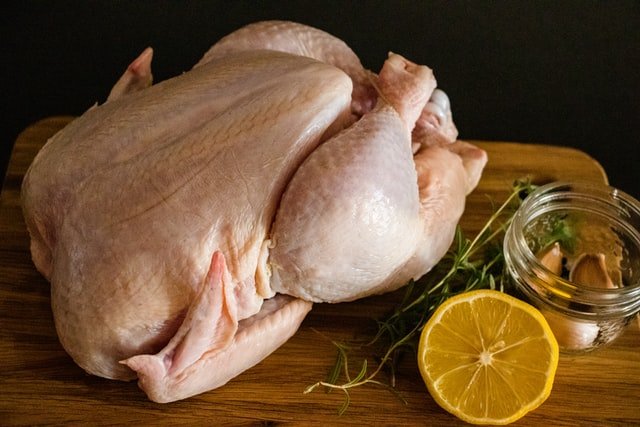Oregano is a herb from Southern Europe, originally from the Mediterranean region. The botanical name is Origanum vulgare. Some people think that Oregano is native to Greece, but others believe that it was brought to Greece in ancient times.
Oregano may help some of the functions of the body. It is used to treat colds, urinary tract infections and diarrhea. It also may be used as a diuretic or to improve digestion.
It may be harmful to take oregano if you are pregnant or breastfeeding, have kidney or liver disease or if you have high blood pressure.
Oregano is an herb that is frequently added to Italian dishes, especially pizza. It comes from the Mediterranean region and has a strong smell and pungent taste. The word oregano comes from the Greek word oros, meaning mountain.
Oregano contains flavonoids, phenols, carvacrol, thymol and other ingredients which are considered powerful antioxidants.
Many types of oregano are grown in different parts of the world and have different tastes, depending on which variety of plant they are from and how they are grown. The leaves of the plant are dark green colored and can be either smooth or hairy. They can be as long as 3 inches or as short as 1/2 inch. The flowers of the oregano plant are pink in color and can be either single or double blossomed.
Oregano is an essential ingredient in Italian cooking, but it is also popular in Turkish cuisine, Indian cuisine, Mexican cuisine and Greek cuisine. It is used fresh or dried and it is added to many dishes including meatballs, stews, sauces and salads.
Oregano: In the wild, oregano is a low-growing shrub which forms large, tough clumps of variegated leaves. The leaves are pungent when crushed, producing a distinctive flavor that is warm, sweet and slightly bitter.
Unlike most other herbs, oregano thrives in hot weather, making it ideal for summertime cooking. It’s also perfect for grilling.
Oregano is a perennial herb native to the Mediterranean but has spread to parts of Asia as well. It grows best in dry soil and full sun to partial shade.
Oregano should be planted in early spring (around March), when you can buy your plants from nurseries or garden centers. It will take around 2 weeks for the plant to become established after planting out – so make sure you mark where you’ve planted it!
When deciding where to plant your oregano, think about how much space you have available. Oregano can grow up to 60 cms tall, plus its trailing stems and flowers can reach up to 80cms long – so make sure you plant it in a space where it won’t be squeezed out by larger plants or where it could overgrow smaller ones (if you’re growing it alongside other herbs).
Oregano is not native to the Mediterranean. It is native to the mountains of Asia Minor, where it was probably first cultivated by the Romans. It was brought to Italy by the Arabs and then spread throughout Europe by trade.
The word “oregano” is a corruption of the Turkish “origanum,” which means mountain dew. This is not because origanum grows at high altitude, but rather because it is full of essential oils that feel like drops of refreshing dew on your tongue. Oregano, like almost all herbs, is a survivor from a time when our ancestors lived in sewers and ate rancid meat that was crawling with bacteria.
Oregano has an unusually rich history, even for an herb. A lot of people don’t realize that oregano can be eaten raw, but they are wrong: if you grow your own oregano and pick it young, it’s delicious in salads or sprinkled on soups. I have never heard anyone say this who wasn’t already into herbs and alternative medicine; it just doesn’t occur to most people that a leafy green thing can be eaten raw. Oregano, for instance, contains the same antioxidants as red wine or cocoa; there’s no reason why you
Culinary oregano is a member of the mint family. The genus and species are Origanum vulgare, and it is native to the Mediterranean region. Its flavor is similar to marjoram, but it is more potent, so recipes that call for marjoram can use half as much oregano as substitute.
Oregano was widely cultivated from antiquity in the Mediterranean region. Theophrastus mentions its cultivation by the Ancient Greeks, and the Romans used it widely both in cooking and in medicine (it contains thymol).
Oregano is a common culinary herb, but it has a secret: the oil in its leaves contains carvingsiloidin, which is toxic to some insects. The substance can be used as an insecticide and has been found to deter ants, aphids and weevils.
Some plants have evolved the ability to fight off pests in other ways. For example, the leaves of dill are peppered with tiny glands that secrete a toxic chemical. Many plants contain chemicals that help fight off fungal diseases.
When the Spanish explorers arrived in the New World, they encountered myriad new plants. They brought some of these back to Europe, and soon European kitchens were filled with all kinds of new tastes, from maple sugar to chili peppers.
When the Portuguese arrived in India, they discovered a whole new world of spices. When Magellan’s men reached the Spice Islands (now part of Indonesia), they found people willing to barter for the goods they had on board: guns, knives, and clothing. The Portuguese weren’t interested in trading for spices; what they wanted was to get paid for selling them spices.
This was not as easy as it sounds. Spices are not exactly common goods–they grow only in certain places, which have climates that do not naturally produce other valuable goods. The Indians were willing to trade with the Portuguese, but only if they paid more than the Portuguese would pay at home in Europe. And so began one of the most brutal episodes of human history: the spice wars.
The Portuguese did what anyone would do when confronted with an opportunity like this: they got organized. They divided up responsibility for various spices among different ships, and sailed out with a fleet of thirty-two vessels carrying guns and soldiers along with whatever spices they could get their hands

